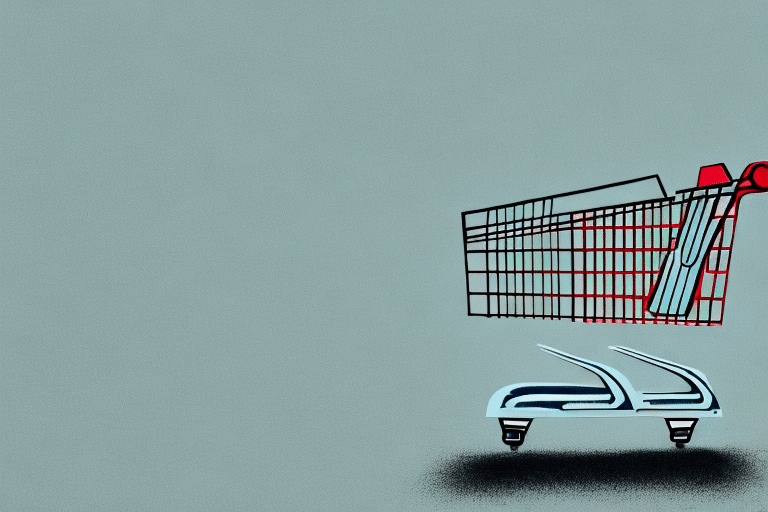What Is Cart Abandonment and Its Significance in E-commerce
E-commerce has revolutionized the way consumers shop, offering unparalleled convenience and a vast array of products at their fingertips. However, one persistent challenge that many online retailers face is cart abandonment. Cart abandonment occurs when a customer adds items to their online shopping cart but fails to complete the purchase. According to Shopify, the average cart abandonment rate across industries ranges between 60% to 80%, representing a substantial loss in potential revenue.
Understanding the Reasons Behind Cart Abandonment
Unexpected Shipping Costs
One of the primary reasons customers abandon their carts is the surprise of unexpected shipping fees at checkout. Transparent pricing is crucial to maintaining trust and encouraging customers to complete their purchases.
Complicated Checkout Process
A lengthy or complex checkout process can deter customers. Simplifying the steps required to complete a purchase can significantly reduce abandonment rates.
Lack of Payment Options
Offering a limited range of payment methods can frustrate customers who prefer alternative options. Incorporating multiple payment solutions enhances the likelihood of purchase completion.
Website Performance Issues
Slow loading times and technical glitches can disrupt the shopping experience, prompting users to leave the site without finalizing their orders. Ensuring a smooth and responsive website is essential.
The Impact of Cart Abandonment on E-commerce Businesses
Financial Losses
High cart abandonment rates translate directly into lost sales opportunities. For instance, if an average cart value is $100 and the abandonment rate is 70%, businesses lose approximately $70 for every potential transaction.
Reputation Management
Negative shopping experiences can damage a brand's reputation. Dissatisfied customers may share their frustrations with others, leading to a decline in potential customer trust and future sales.
Effective Strategies to Reduce Cart Abandonment
Simplify the Checkout Process
Minimize the number of steps required to complete a purchase. Implementing a guest checkout option can streamline the process for users who prefer not to create an account.
Transparent Shipping Information
Display all shipping costs upfront to avoid surprising customers at the final stage. Offering free shipping on orders above a certain threshold can also incentivize purchases.
Multiple Payment Options
Incorporate a variety of payment methods, including credit cards, PayPal, Apple Pay, and other digital wallets to cater to diverse customer preferences.
Enhance Website Performance
Optimize website speed by compressing images, leveraging browser caching, and minimizing the use of heavy scripts. A fast-loading site improves user experience and reduces abandonment rates.
Provide Clear and Accessible Customer Support
Offer multiple channels for customer support, such as live chat, email, and phone support. Responsive customer service can address concerns in real-time, encouraging customers to complete their purchases.
Personalization and User Experience
Tailored Recommendations
Utilize customer data to offer personalized product recommendations based on browsing history and past purchases. Personalized experiences can enhance user engagement and increase conversion rates.
Streamlined Navigation
Ensure that your website is easy to navigate with clear categories and search functionalities. A user-friendly interface helps customers find what they're looking for quickly, reducing the chances of abandonment.
Optimizing Mobile Shopping to Reduce Cart Abandonment
Responsive Design
With the rise of mobile shopping, having a mobile-responsive website is crucial. Ensure that your site adapts seamlessly to various screen sizes and devices.
Mobile-Friendly Checkout
Design a checkout process optimized for mobile users, including large buttons, easy form filling, and simplified navigation to enhance the mobile shopping experience.
Recovering Lost Sales from Cart Abandonment
Retargeting Ads
Implement retargeting campaigns to remind customers of the items they left in their carts. Platforms like Google Ads and Facebook Ads offer effective retargeting solutions.
Abandoned Cart Emails
Send personalized follow-up emails to customers who have abandoned their carts. Including a compelling subject line and a clear call-to-action can encourage them to return and complete their purchase.
Exit-Intent Pop-ups
Use exit-intent technology to display targeted offers or discounts when a user is about to leave the site. This last-minute incentive can persuade customers to finalize their transactions.
Measuring and Analyzing Cart Abandonment
Tracking Key Metrics
Monitor essential metrics such as cart abandonment rate, conversion rate, and average order value using tools like Google Analytics.
Conversion Funnel Analysis
Analyze each stage of the conversion funnel to identify where customers are dropping off. Understanding these pain points allows for targeted improvements to the shopping experience.
The Future of E-commerce and Combatting Cart Abandonment
Embracing Emerging Technologies
Stay ahead by integrating technologies like artificial intelligence and virtual reality to create immersive shopping experiences. These advancements can enhance personalization and user engagement.
Continuous Optimization
Regularly update and optimize your website based on user feedback and behavioral data. Staying adaptable ensures that your strategies remain effective in reducing cart abandonment.






















